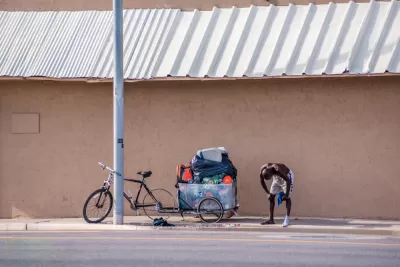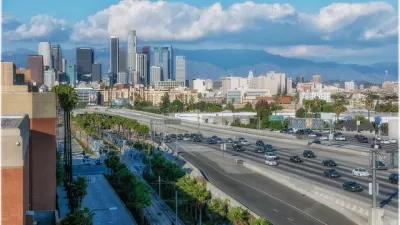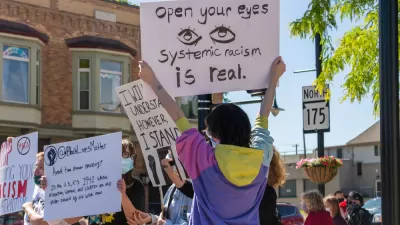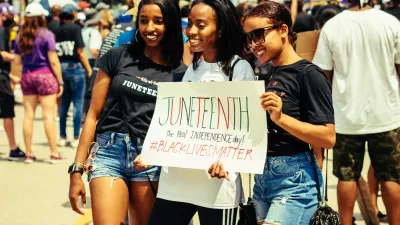The people living in urban heat islands are much more likely to be inhabited by low-income people of color, and the roots of the environmental justice issue can be found in planning history.

Kale Williams shares news of a new study that connects urban heat islands (areas where temperatures are exacerbated by the built environment) to a history of racist land use regulations.
Now, a new study from Portland State University is showing, for the first time, that areas prone to excessive heat are disproportionately populated by low-income communities and people of color due to racist housing policies that stretch back more than a century.
Williams summarizes more of the study's findings:
Nearly every city included in the study saw higher temperatures in neighborhoods that were historically subject to discriminatory housing policies, with poorer areas seeing averages temperatures about five degrees higher than their wealthier counterparts. And, of the 108 urban areas analyzed, Portland came in with the worst temperature discrepancy between rich and poor, a difference of almost 13 degrees.
Jeremy S. Huffman, Vivek Shandas, and Nicholas Pendleton wrote the study, which was published in the Climate journal.

Alabama: Trump Terminates Settlements for Black Communities Harmed By Raw Sewage
Trump deemed the landmark civil rights agreement “illegal DEI and environmental justice policy.”

Planetizen Federal Action Tracker
A weekly monitor of how Trump’s orders and actions are impacting planners and planning in America.

Why Should We Subsidize Public Transportation?
Many public transit agencies face financial stress due to rising costs, declining fare revenue, and declining subsidies. Transit advocates must provide a strong business case for increasing public transit funding.

Understanding Road Diets
An explainer from Momentum highlights the advantages of reducing vehicle lanes in favor of more bike, transit, and pedestrian infrastructure.

New California Law Regulates Warehouse Pollution
A new law tightens building and emissions regulations for large distribution warehouses to mitigate air pollution and traffic in surrounding communities.

Phoenix Announces Opening Date for Light Rail Extension
The South Central extension will connect South Phoenix to downtown and other major hubs starting on June 7.
Urban Design for Planners 1: Software Tools
This six-course series explores essential urban design concepts using open source software and equips planners with the tools they need to participate fully in the urban design process.
Planning for Universal Design
Learn the tools for implementing Universal Design in planning regulations.
Caltrans
Smith Gee Studio
Institute for Housing and Urban Development Studies (IHS)
City of Grandview
Harvard GSD Executive Education
Toledo-Lucas County Plan Commissions
Salt Lake City
NYU Wagner Graduate School of Public Service





























